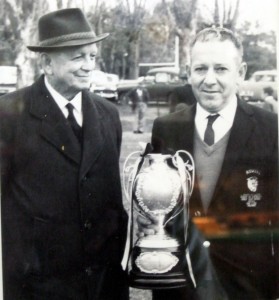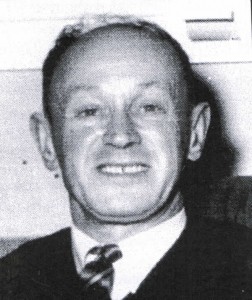Graphically representing the number of matches played by each club helps illustrate the highs and lows of their footballing journeys over the 52 years of the Maher Cup history, and provides the basis of a brief club history. Failure to capture the Cup meant twiddling thumbs and fretting on the outcome of the next draw.
Cootamundra (224 matches). Playing 62 games more than any other team, Coota started with a bang in 1922 winning in its first game under Phil Regan – the first paid-player coach in the bush. They didn’t let up. Regan’s 1920s blue and whites, featuring players such as Eric Weissel, Jack Kingston, Bill Lesberg and Gordon Hinton utterly dominated their opponents. With a little help they even took on England. During the Depression years, after Regan departed, it all fell apart for a while. 1935 saw the purchase of five paid players, an embarrassing loss to Tumut, and the imports instantly sacked. Coota rose to the top again in 1939 with a team composed mainly of local ex-De La Salle boys. After the war Herb Narvo (1947) and Johnny Graves (1954) led teams of extraordinary quality. Reverting to mainly local players the town continued to be consistently competitive into the 1960s. Continue reading


